The origin of the Savannah breed began with the cross between the African Serval and a domestic cat. The name of the breed derives from the usual residence of the African Serval: the Savanna grasslands of Africa.
The first known Savannah cats were achieved in the USA and it is thought that Bengal Breeder Judee Frank successfully mated a domestic (siamese) cat with an African Serval to produce the first F1 hybrid cat of its kind on 7th April 1986.
Another enthusiast Patrick Kelly came to work with Judee Frank in developing this successful mating into a new domestic breed of cat. The purpose of this would be to provide people with an exotic looking cat with a wild heritage but a domestic temperament. Patrick Kelly then approached many breeders who owned Servals with the hope of getting them on board in developing the breed. Very few breeders were interested but Mr Kelly did successfully persuade Joyce Sroufe to join him in his efforts.
In 1996 Patrick Kelley and Joyce Sroufe wrote the original version of the Savannah breed standard and presented it to the board of The International Cat Association (TICA). In 2001, the board accepted the breed for registration. The Savannah cat is now shown at TICA shows and in 2012, was voted by the TICA BOD to advance to Championship.
Below is an example of the TICA Savannah cat breed standard:

Joyce Sroufe went on to become a very successful Savannah breeder and is often credited with being the founder of this breed. With her extensive knowledge and skills in cat breeding, she produced more Savannahs than any other breeder at the time and was the first to breed down to the later generations and produce fertile males. She provided breeding females and fertile males to other Savannah breeding programs and many of today's Savannah cats originate from the lines developed by her at A1 Savannahs (formally New Horizon Bengals).
Savannahs were not introduced to the United Kingdom until the late 1990's making them a relatively new breed of cat here.
Below is a photograph of my first Savannah litter born in 2009, around 10 years after the breed was introduced to the UK:

The African Serval
The African Serval is a medium sized wild cat that generally resides in the Savanna grasslands. It is a strong and slender cat with the longest legs of all cats, designed especially for jumping. Likewise, the Serval has a long neck for seeing over tall grasses and a small head with high set oval shaped ears designed for acute hearing. To the back of the ears are white markings called 'Ocelli', also known as night eyes thought to be used to prevent attack from behind.
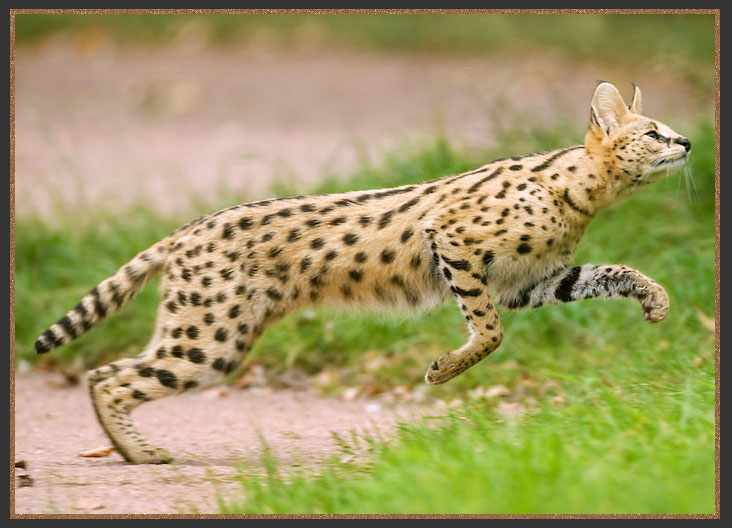
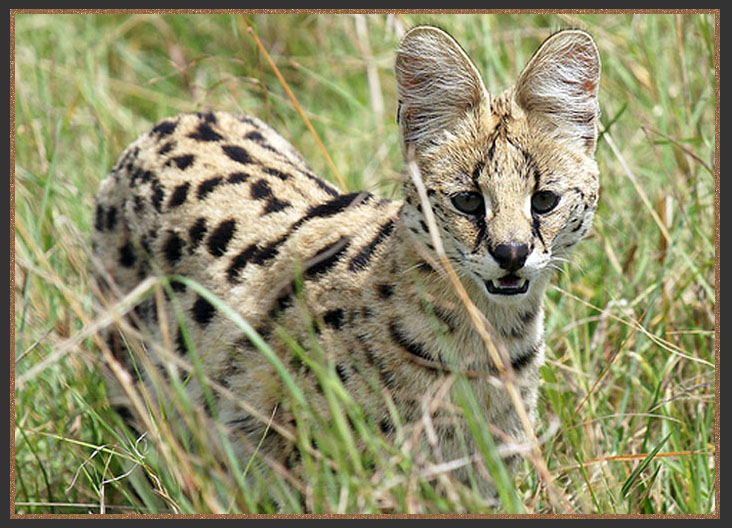
The Serval's body length can range from 33 to 44 inches not including its short thick tail which itself can measure 12 to 18 inches long. The Average shoulder height approximates 23 inches and weight can range from approximately 20-57 lbs, depending on the sex of the Serval.
Most commonly, the Serval's coat has a bright yellowish brown/golden background contrasted with large black spots on its body and legs. It also has black stripes running from its head, down the neck breaking up into spots as it reaches the Serval's body. Servals that dwell in damp areas have finer markings and those that live in warmer surroundings have a coat with large, bold spots.
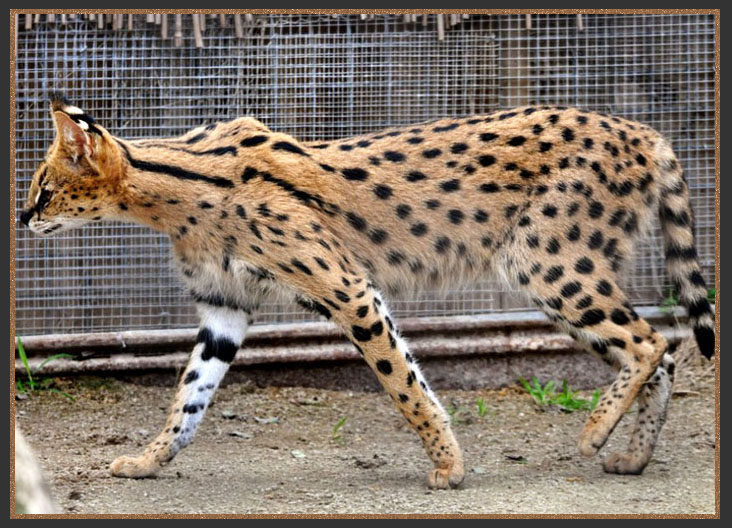
Though very rare, there are also white Servals living in captivity.
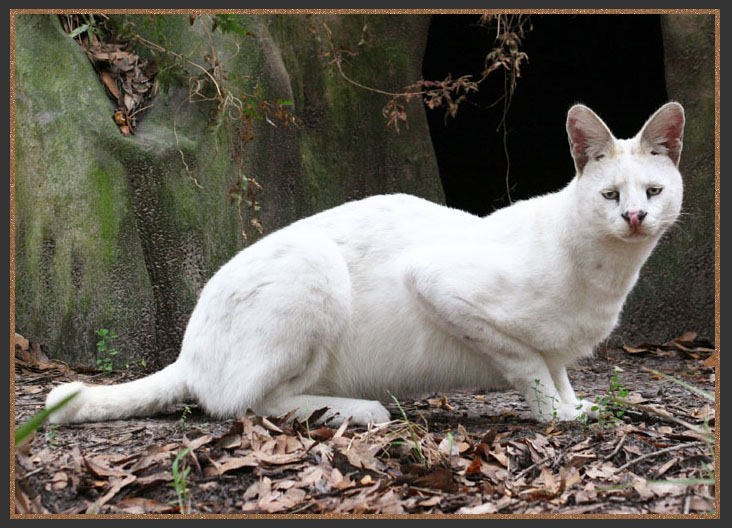
Below is my very own home bred version of the white African Serval. I don't intentionally breed for snow but Sittingpretty Lila Paws was a very nice surprise:
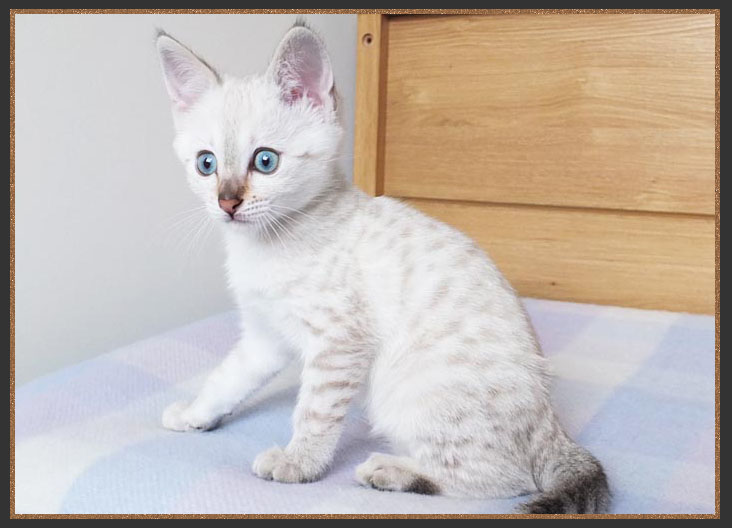
There are also melanistic Servals living in the mountainous areas of Africa.
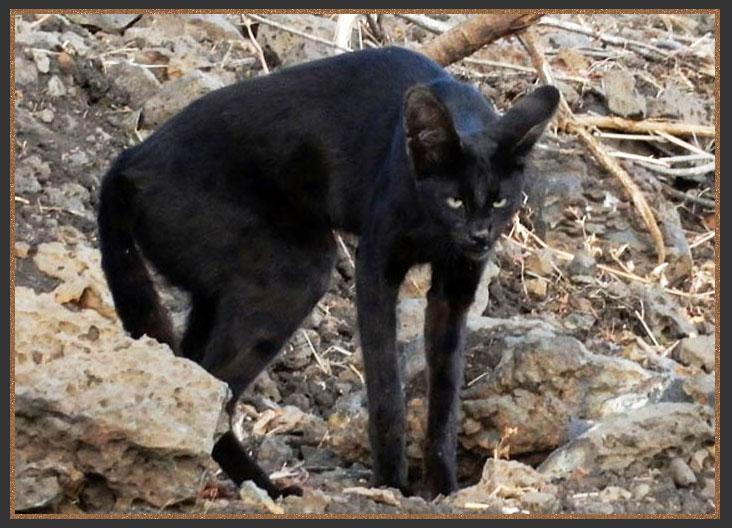
Below is an example of a melanistic Savannah which most closely resembles the melanistic Serval:
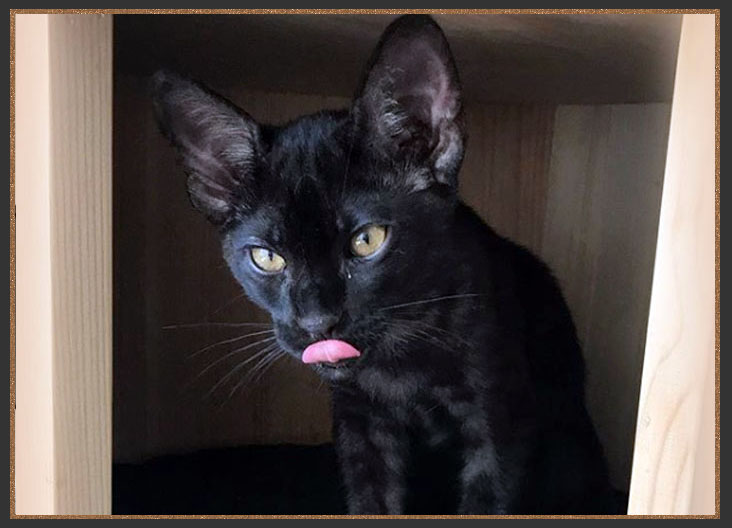
Servals are extremely intelligent, cunning and mischievous. They demonstrate remarkable problem-solving ability and easily outwit their prey. Prey is caught by jumping (up to 16 feet) in the air and landing on it. Once caught, the Serval will often play with the prey for several minutes before devouring it and in most situations will ferociously defend it against attempted theft.
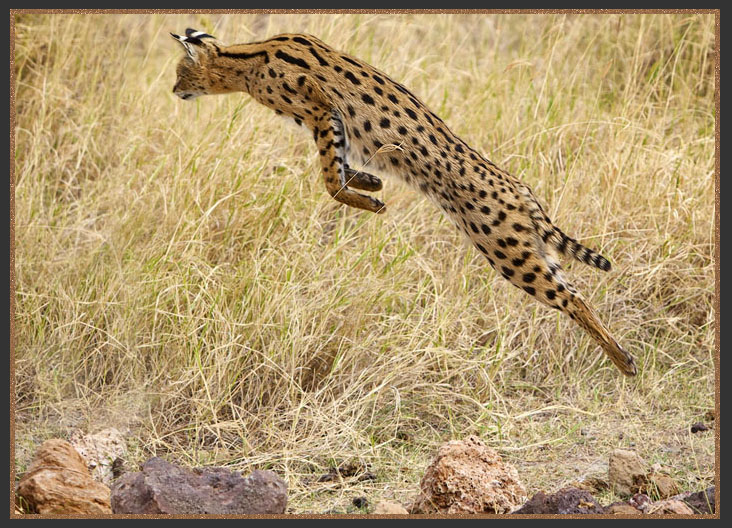
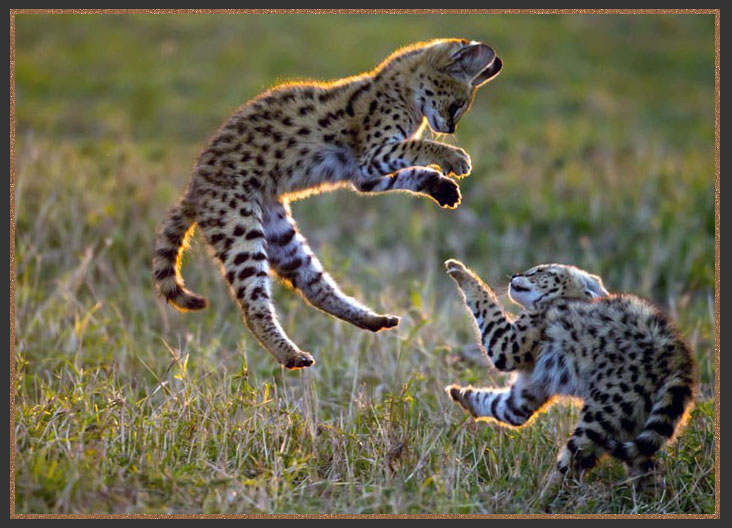
A Serval's diet depends on it's surroundings and what is available to it but generally ranges from squirrels, rodents, insects, fish, frogs, chicks, hares, fruit, vegetables and water.
Servals have been kept as pets in many countries for centuries. Where they are kept as pets, they often develop an intense emotional bond with their human owners and they may become quite unhappy if separated or placed with other families. Therefore a domesticated Serval should be kept with its owner for the entirety of its life and in many countries, including the UK, owning a Serval first requires a special permit or Wild Animal Licence.
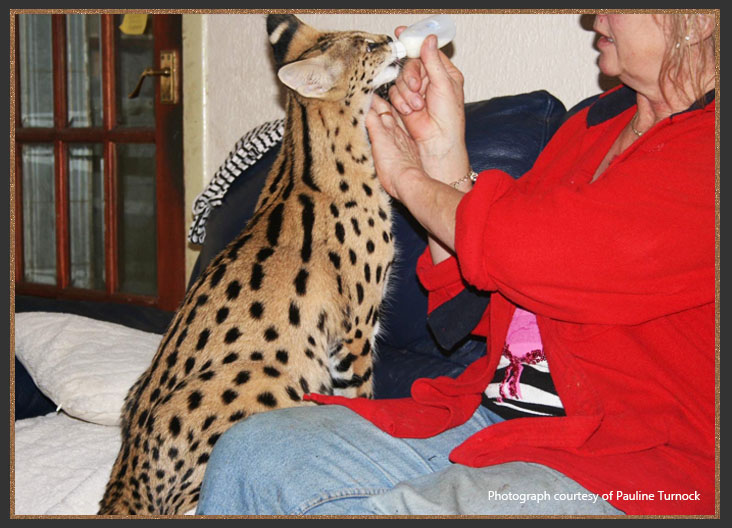
Below is a photograph of a wonderful African Serval called George that I have had the pleasure of meeting. He is owned by Haley at Scottyspots Savannahs and he was raised in their family home. Now he is fully grown, he has moved to an outdoor enclosure but he still frequents the house often:

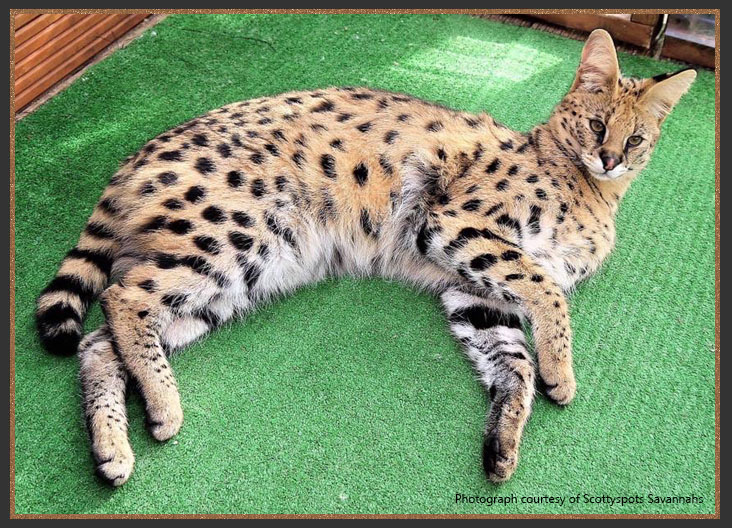
Sources: The International Cat Association (TICA) Savannah Breed Standard, Wikipedia and Savannahcat.com




